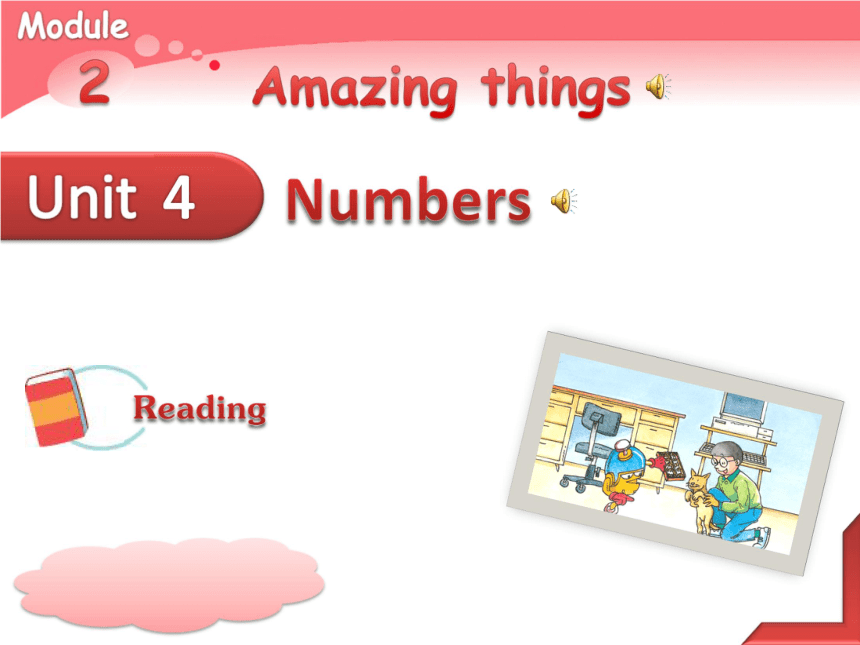
课件34张PPT。24Amazing thingsNumbersReading122-1Puzzle timeIn these two pictures, Grandad is helping Billy with his homework. Billy is using a calculator and Grandad is using an abacus. Mum and Dad are watching. Can you find 15 differences between the pictures? Say and write a sentence about each of the differences.2-212ABExample: In Picture A there are four sweets, but in Picture B there are five sweets.128-1What do you know about …?A1 We are going to read about an international language – numbers. Do you remember what ‘international’ means? 345international between different nations or countries678A2 Do you know what ‘language’ means?8-212345language (n.) words that a certain group of people say and write/'l??ɡw??/Do you know any international languages?678A3 The word digit has two meanings, a number�(1, 2, 3, etc.) and a finger. The words calculator and calculate came from a word that meant a stone. Guess the connections between number and finger and between stone and calculator.8-312345Before numbers were invented, people counted with their fingers or with stones.digit10+10=?6788-412345calculate (v.) find the answer by using maths/'k?lkjule?t/Can you calculate how much the holiday will cost?calculator (n.) an electronic machine that adds, subtracts, multiplies and divides/'k?lkjule?t?(r)/+-×÷addsubtractmultiplydivide/s?b'tr?kt//'m?lt?pla?//d?'va?d/6788-512345A4 Can you give the largest number that exists?In fact, there isn’t one. Every number can always be made bigger by adding 1 to it.A5 Think of the jobs that use numbers a lot and the jobs that do not use numbers often.6788-612345B1 Use your dictionary to look up these words�and phrases.6788-712345B2 We all use numbers in our daily life. Numbers�are an international language. What do you know about the language of numbers? Try this quiz. Match the words with the signs and numbers.6781 a decimal number 7 add; plus 2 equals 8 subtract; minus 3 a pair of odd numbers 9 multiply 4 a pair of even numbers 10 divide 5 a fraction 11 a number showing degrees 6 zero 12 a percentage8-812345123456789101112/d?'ɡri://p?'sent??/678123-1Before you readA Before you read the passage, look at the following pictures first. Put them in the order of the history of numbers. Then look at the headings on page 57 and check your answers. 303-2123This history of numbers0Ancient numbersZeroCalculating machinesBrain against computerB Now, look at the title, the introduction, the�headings and the pictures. Then on the list below, tick (?) the things you think the article may tell you. 3-3123Long ago, there were different ways of writing numbers. Zero is not a number. Zero is an especially important number. Machines make it easier for us to calculate. Your brain may calculate better than a computer. Your brain is an important part of your body.? ? ? ? ? ?????While you read16-112345A1 Read the whole passage on page 57 for the first time. Find the following words or phrases in the passage. Work out their meanings by ... ...
~~ 您好,已阅读到文档的结尾了 ~~

